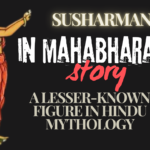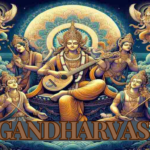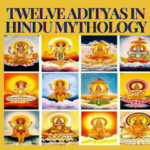In the vast and diverse cultural landscape of India, the worship of goddesses holds a pivotal role. Goddesses in India are not merely deities but are imbued with deep philosophical and cultural significance. They represent the feminine divine, and their worship is intertwined with the daily life, rituals, and practices of millions. This blog post aims to delve into the rich tapestry of goddess worship in India, exploring its origins, various forms, and contemporary relevance.
The Historical Roots of Goddess Worship.
The veneration of goddesses in India dates back to prehistoric times, with archaeological findings from the Indus Valley Civilization hinting at the worship of fertility goddesses. This practice evolved significantly over millennia, influenced by Vedic, Puranic, and Tantric traditions.
“The divine feminine represents boundless energy, creativity, and the vital force that sustains the universe.” – Devdutt Pattanaik.
Vedic and Puranic Goddesses.
During the Vedic period, goddesses like Ushas (dawn) and Prithvi (earth) were revered. The Puranas later introduced us to a pantheon of goddesses such as Lakshmi, Saraswati, and Parvati. Each goddess embodies specific aspects of life and the universe.
Tantric Influence.
The Tantric tradition elevated the goddess to a supreme cosmic principle. Goddesses like Kali and Durga emerged as powerful, complex figures symbolizing both creation and destruction. Their worship involves rituals that aim to balance cosmic energies.
Key Goddesses in Indian Worship.
Durga: The Warrior Goddess.
Durga, known as the invincible warrior, is celebrated during the festival of Navaratri. She symbolizes strength and protection, often depicted riding a lion and wielding weapons.
- Festival: Navaratri
- Symbolism: Strength and protection
- Iconography: Riding a lion, multiple arms holding weapons
Lakshmi: The Goddess of Wealth.
Lakshmi is revered as the goddess of wealth, prosperity, and good fortune. Diwali, the festival of lights, is dedicated to her. She is often depicted seated on a lotus, with gold coins streaming from her hands.
- Festival: Diwali
- Symbolism: Wealth and prosperity
- Iconography: Seated on a lotus, gold coins, elephants
Saraswati: The Goddess of Knowledge.
Saraswati is the embodiment of wisdom, art, and music. Her festival, Vasant Panchami, is celebrated by students, artists, and musicians. She is portrayed playing the veena, a musical instrument, and is associated with purity and creativity.
- Festival: Vasant Panchami
- Symbolism: Knowledge and creativity
- Iconography: Playing the veena, swans, books
Contemporary Relevance of Goddess Worship.
In modern India, goddess worship continues to be a vital part of cultural and religious practices. It has evolved to include socio-political dimensions, with goddesses symbolizing women’s empowerment and ecological conservation.
Women’s Empowerment.
Goddesses like Durga and Kali inspire movements for gender equality and women’s rights. Festivals such as Durga Puja become platforms to discuss and promote women’s empowerment.
Ecological Conservation.
The worship of goddesses associated with nature, like Ganga (the river goddess) and Tulsi (the sacred plant), underscores the importance of environmental conservation. These practices foster a sense of respect and responsibility towards nature.
The goddess in India is a multifaceted entity embodying various aspects of life, nature, and spirituality. From ancient times to the present day, the worship of goddesses has been an integral part of Indian culture. It not only reflects the spiritual beliefs of millions but also influences contemporary social and ecological discourses.





